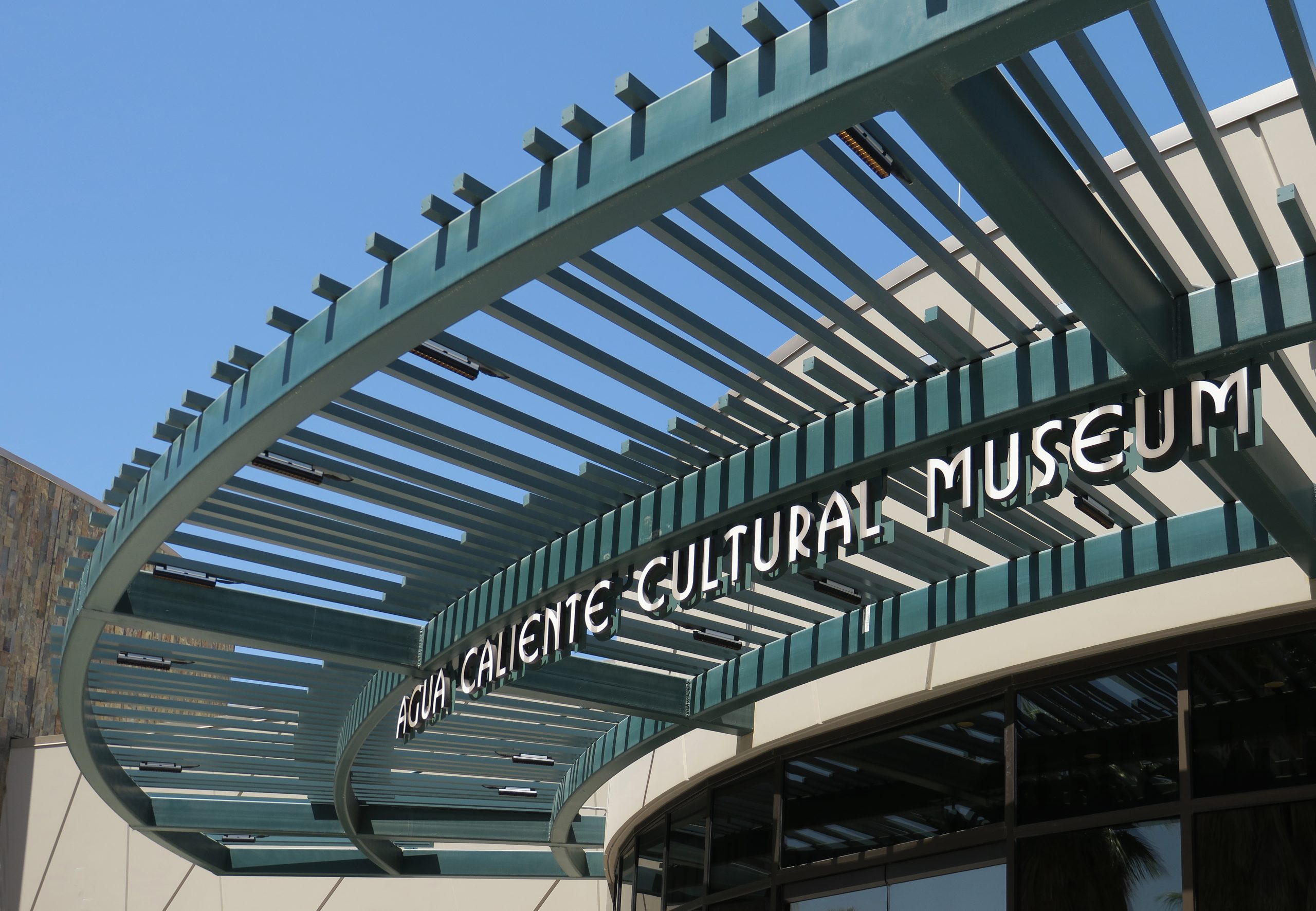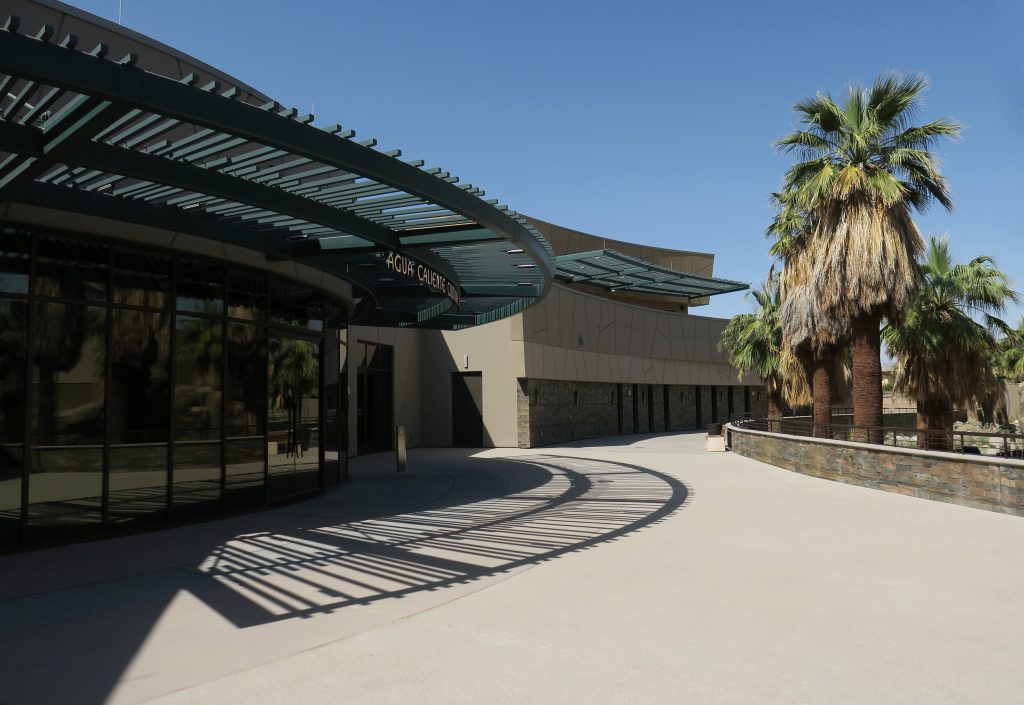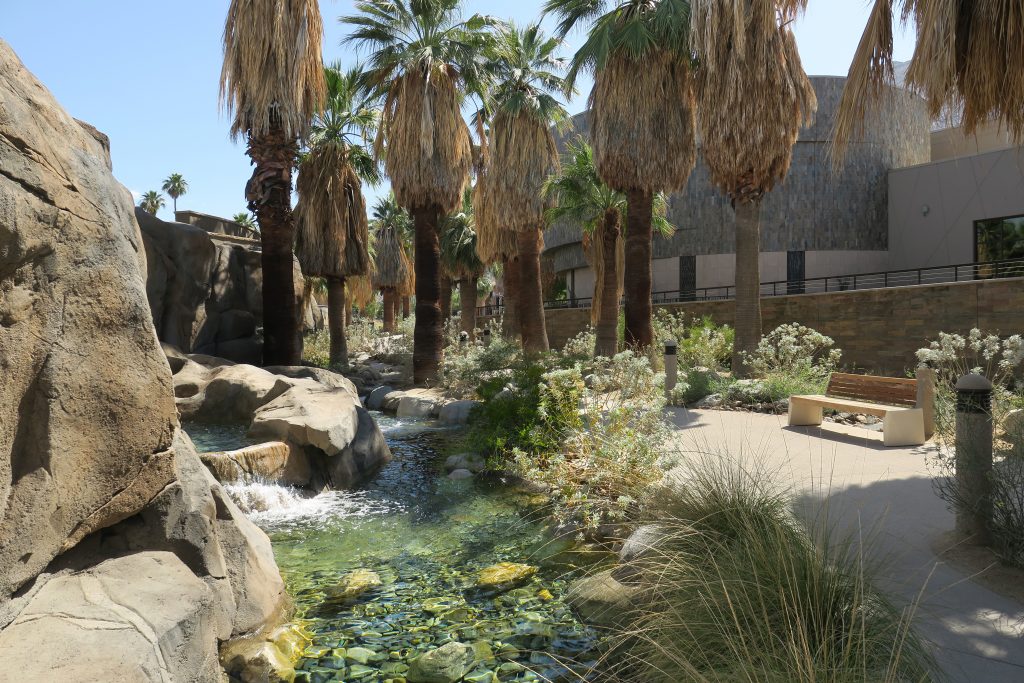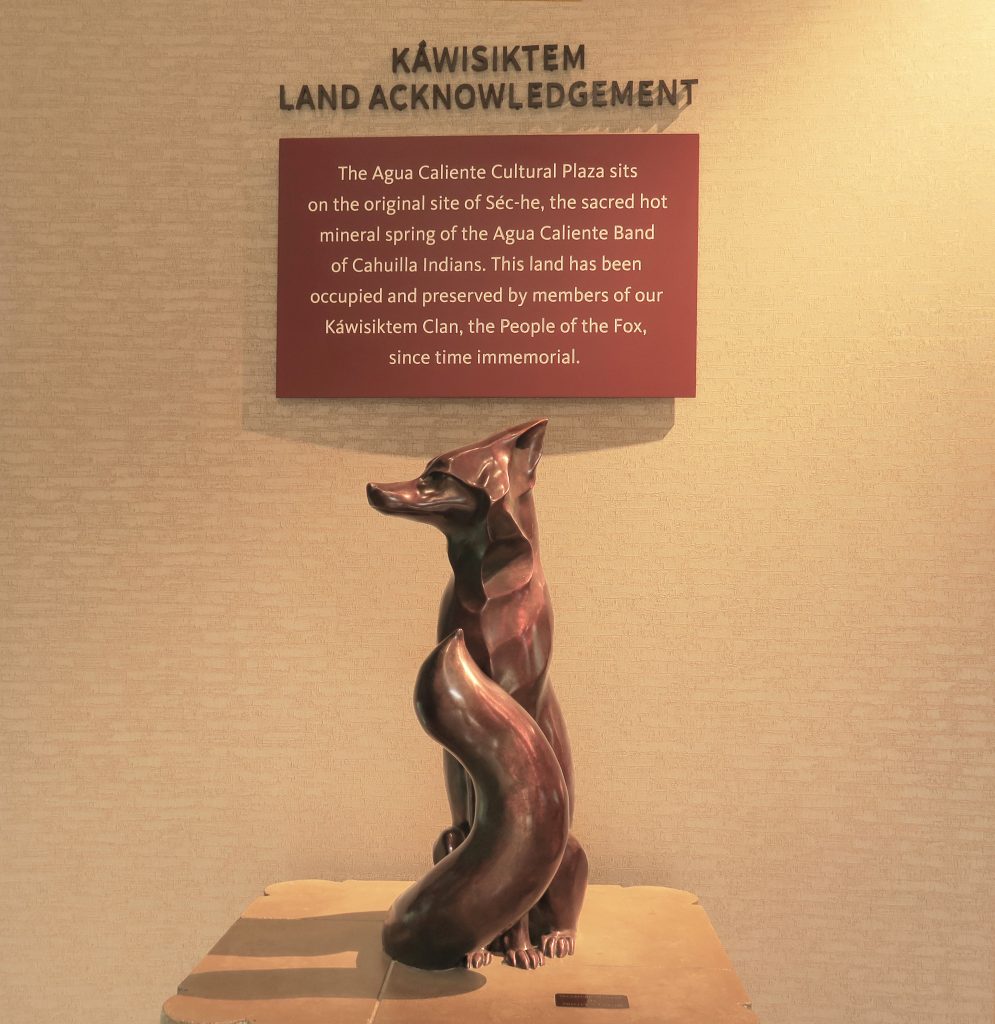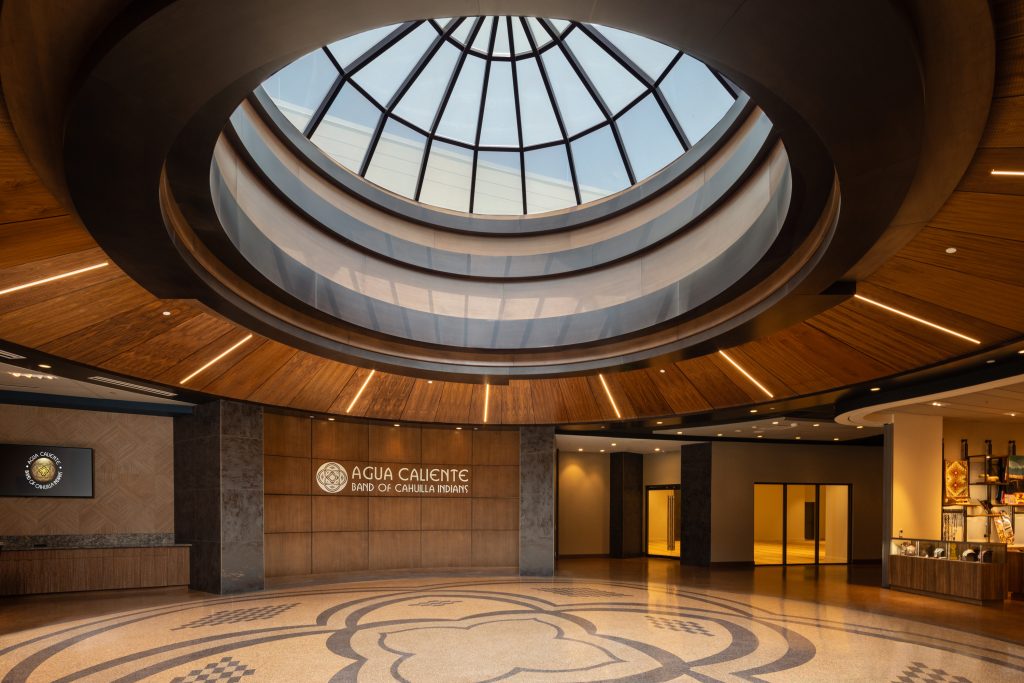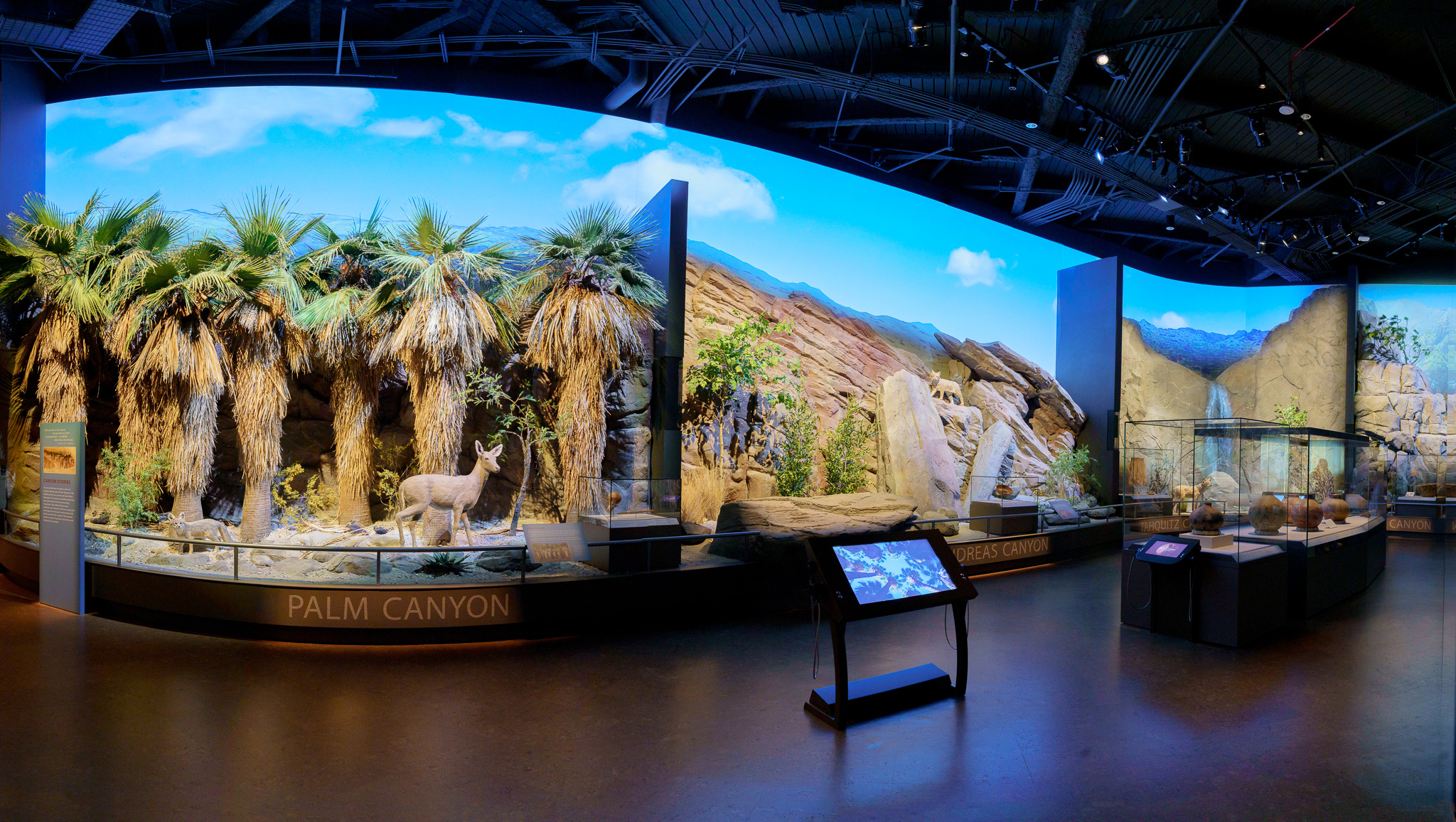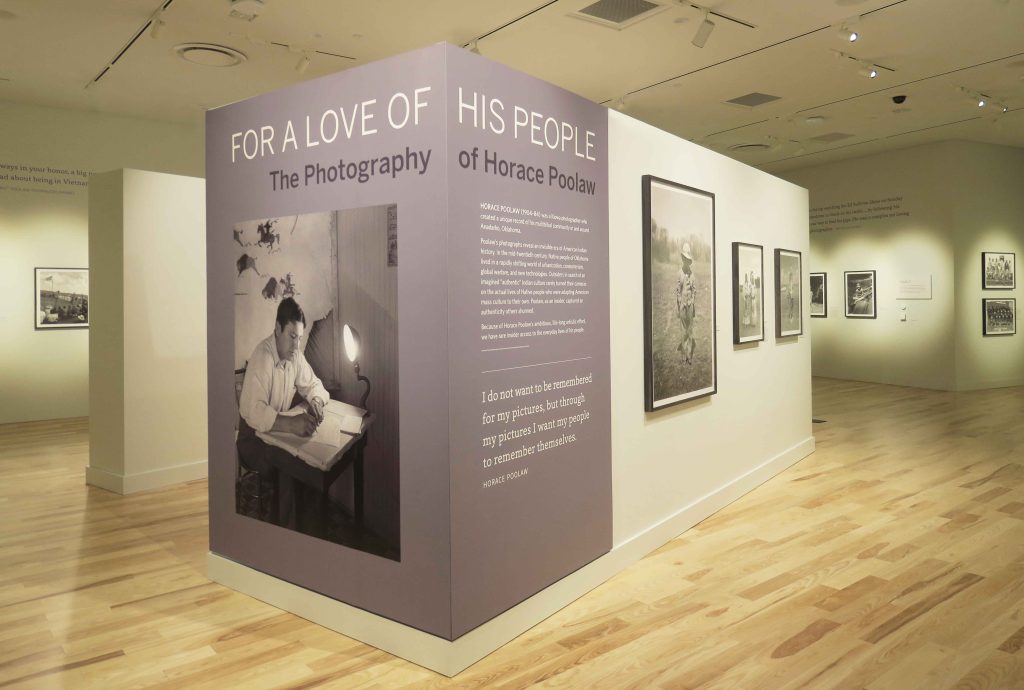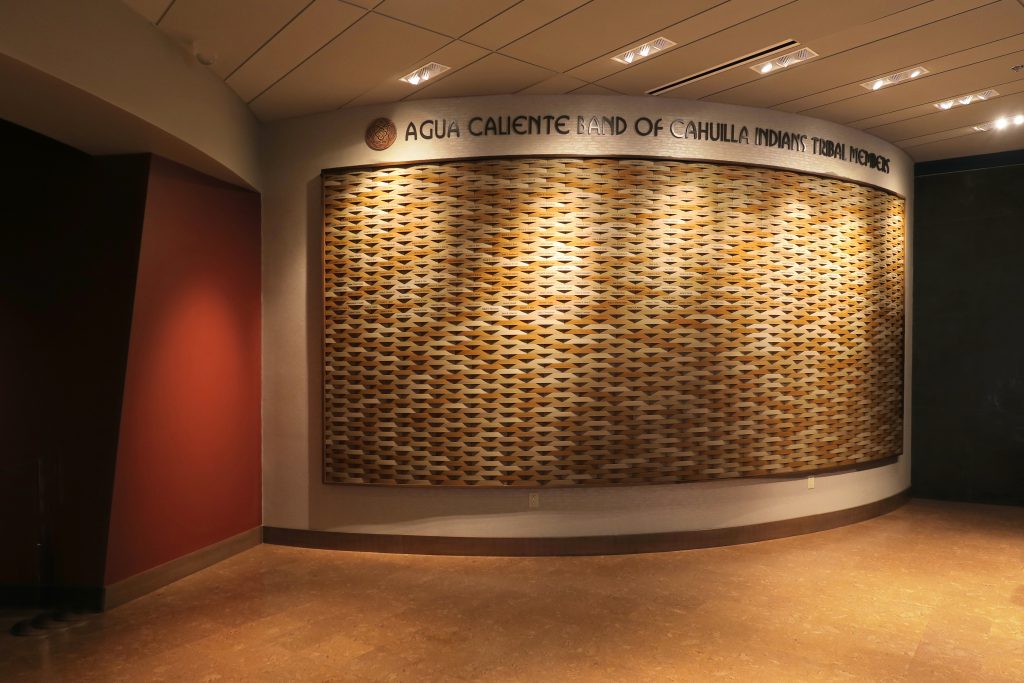The desert city of Palm Springs is renowned for the mid-century modern architecture that blossomed there as the area became a quick getaway for the Hollywood movie stars looking to escape the tight studio grip and the tabloid media of the 1940’s and 50’s. But way before the arrival of the Rat Pack crowd and their dry martini cocktail fueled lifestyle, Palm Springs was the home of the Cahuilla people, who had inhabited the area for hundreds of years. Now, with the opening last year of the Agua Caliente Cultural Museum in the heart of the city, that important Native American legacy will be both preserved and celebrated!
Part of what is called the Agua Caliente Cultural Plaza and located on historical tribal land site above the ancient Agua Caliente hot mineral spring, the complex also includes a sprawling welcome plaza and the Séc-he spa. The museum (an official Smithsonian affiliate) was designed by architectural firm JCJ Architecture, with collaborative input from the tribe leadership. Taking a cue from the Cahuilla tradition of basketmaking, the architects were inspired by the starting coils of a new basket to create a layout of spiraling curved walls and spaces. The design concept also references the natural environment that has nurtured the history and culture to the Cahuilla people.
Scattered throughout an area close to 10,000-square-foot space are galleries devoted to permanent and temporary exhibits, and, honoring the tribe’s ancestral connection to the land, is the Oasis Trail, an outdoor landscaped exhibition showcasing some of the natural elements (plants, rocks and water features) commonly found in the tribes Reservations. The permanent gallery is split into 5 different sections that tell the visitor of the origins of the Cahuilla people, their movements and migrations, the land. It brings their story full circle to today, and the display area elaborates on their challenges and adaptive resilience throughout time and a final display area sheds light of their future perspectives.
At the temporary exhibit gallery, the focus is on Native American art. Currently on view is “For a Love of His People: The Photography of Horace Poolaw”, an Oklahoma photographer from the Kiowa tribe of the Great Plains. Organized by the Smithsonian National Museum of the American Indian and curated by Tom Jones ( from the Ho-chunk) nation and Nancy Marie Mithlo ( Chiricahua Apache), the exhibit offers a unique look at the every day life of American Indians shot by an American Indian, showcasing in beautiful black and white images the mundane moments and the special occasions of the photographers fellow tribes people.
At a time of heightened awareness and respect of the Native American heritage, the new Agua Caliente Museum, through its architecture, its carefully curated exhibits and thoughtful programming, masterfully takes the concept of “land acknowledgement” from respectful statement to a concrete built-reality that expands its peoples legacy.
Top Photo of Agua Caliente is by Paul Clemence
By Paul Clemence: artist, award winning photographer, writer, curator, exploring the cross sections of design, art and architecture.

